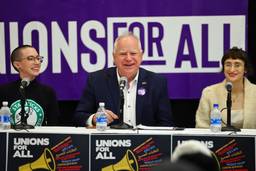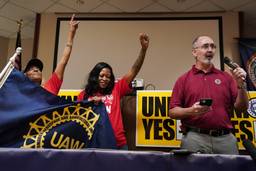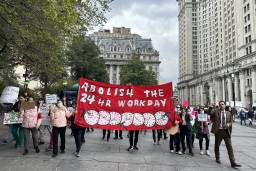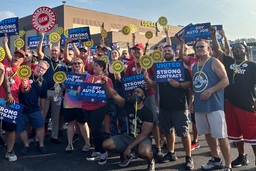“We’re Calling Bullshit”: Why Museum Workers Keep Unionizing
In Philadelphia and across the country, the movement to organize cultural workers just keeps growing.
Mindy Isser
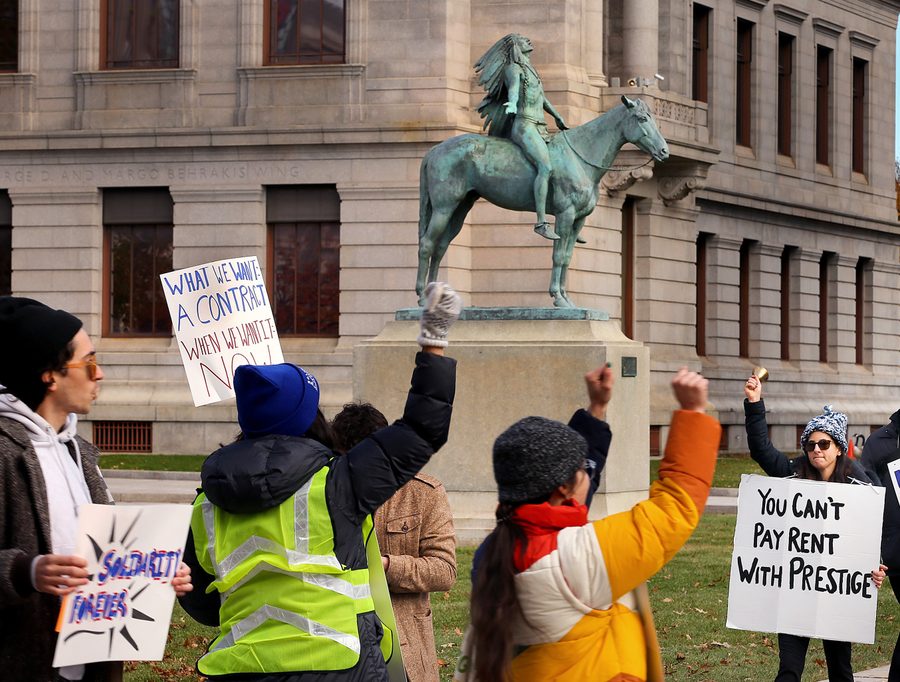
In late March, workers at Philadelphia’s Please Touch Museum (PTM), one of the top ten ranked children’s museums in the country, voted to join the American Federation of State, County, and Municipal Employees District Council 47 (AFSCME DC 47) Local 397. The landslide win (85% of workers voted to unionize) follows other recent union victories in Philadelphia— including at the University of Pennsylvania Museum of Archaeology and Anthropology (Penn Museum) and the Philadelphia Museum of Art (PMA)— as well as at other museums and cultural institutions around the country. The win at the PTM marked the third museum union victory for AFSCME in the month of March.
White-collar cultural workers have been organizing in droves over the last few years, mirroring the country’s growing support of unions, which currently sits at 68% — its highest point since 1965. While white-collar workers may not traditionally be seen as the face of unions, Shaun Richman, an author, academic and former union organizer, tells In These Times that these workers “feel like they were sold a bill of goods by going to college, racking up debt and then not getting rewarded with a fairly decent six figure job with decent benefits and basic respect.”
Just because a job is well-respected and requires a college degree does not mean it comes with a hefty salary and generous benefits. Younger workers are facing this reality as they join the workforce, making them more likely to support unions and to advocate for better working conditions. Sarah Shaw, an organizer with AFSCME DC 47, sees this dynamic in the workplaces her union has organized. “[New hires] arrive ready and excited to sign their cards and start participating in the life of the union,” she says. “There is less fear and hesitancy around union activity than was typical even just a couple of years ago. To me, this indicates that the normalization of unions and union membership is already starting to happen and that workers starting jobs in museums today are better informed of their rights than in the past.”
Camille Young started working at the PTM in August 2022, and was soon approached by her coworkers about forming a union. Young’s background is in musical theater, where she saw the importance of having a union firsthand, thanks to her membership in the Actors’ Equity Association. Because of that history, and seeing coworkers make low wages and experience safety issues, she supported the union from the beginning. Young says, “the biggest thing is certainly just safety, we just don’t have strict enough policies for a museum, especially one that’s for children. Staff get injured sometimes at work, and there have been instances where guests harass people or violate the code of conduct.”
Scarlett DeLorme, who started at the museum in May 2022, echoes those same concerns around safety while pointing out that low wages are a major issue. She tells In These Times that while most of her co-workers want and expect a lifelong career in the museum field, the workplace experiences a lot of turnover because of mismanagement and lack of advancement. “[Workers] love what they do, they really love educating and working with children, and it feels like management is making this a hard place to do that in,” she says. Many make between $15 and $18 an hour, an issue DeLorme hopes to address during contract negotiations, because “it’s not getting cheaper to live here, and a lot of us do other work on the side.”
While workers at the PTM were organizing, workers at the Philadelphia Museum of Art were out on a 19-day strike, after negotiations stalled following two years of bargaining. According to DeLorme, “the strike helped set the foundation for us… it made it a lot easier for us to have organizing conversations.” (PMA’s strike was successful: their first contract included wage increases totaling 14% across the life of the contract, substantial reductions to the cost of the healthcare plan, four weeks of paid parental leave, which was an increase from zero, and an increase in the minimum hourly wage at the museum to $16.75 an hour.)
The PMA won their union in August 2020, after a worker there created a Google Spreadsheet titled Art/Museum Salary Transparency, prompting respondents to list their employer, role, salary and benefits. More than 3,000 workers around the world participated anonymously and showcased the breadth of pay in the culture sector, with some museum workers making $12 per hour while others made $250,000 annually.
Adam Rizzo, President of Local 397 and an educator at the PMA, says that “a lot of folks from our museum started inputting their information, folks from museums across the country started doing the same, and it really got conversations going because we were able to look right in front of us and see inequities in our own institution, and also compare salary and benefits to other institutions across the country, which was really eye-opening and a huge catalyst for our organizing.”
The organizing committee at the PMA was just about to get their coworkers to sign union authorization cards and go public with their campaign when the pandemic hit. Rizzo tells In These Times that “Covid affected our organizing big time. The added precarity of the pandemic made people want to organize even more, and showed how important it was.”
The pandemic was the impetus for organizing at other museums, too. At the Field Museum in Chicago, workers faced pay cuts and layoffs, even though the museum received a PPP loan, and most revenue came from sources other than ticket sales. Ultimately, 71 jobs were eliminated and 56 employees were furloughed in summer 2020. After museum management declined to voluntarily recognize the employees’ union, workers won their election in early March of this year, and are now affiliated with AFSCME Council 31. (The third museum union victory for AFSCME last month was at the Wexner Center for the Arts in Columbus, Ohio.)
AFSCME represents more museum workers than any other union, along with workers at zoos, planetariums, botanical gardens and other cultural institutions. According to Rizzo, “the idea that we do this because it’s a public service or because we love the work or because of the associated prestige, we’re calling bullshit on it. Across sectors, not just museums, people are realizing that what they were promised is not happening, and emerging professionals, especially the younger folks coming in, are demanding a lot more from their employers.”
It’s not just museum and cultural workers who are unionizing — organizing in other white collar industries, like academia and digital media, has exploded over the last decade. Richman, a former organizer with the AFT, tells In These Times that, “At the time, I felt that we, as a movement, needed to figure out a way to get more white collar professionals to see themselves as workers and to organize unions to help normalize what we were trying to do in higher ed and other white collar professional fields.” Due to worsening precarity in these fields — digital media sites shutting down suddenly due to loss of investment, universities relying more and more on contingent faculty — thousands of digital media workers have joined unions with the Newsguild or SAG-AFTRA. The same is true with graduate workers and non-tenure track faculty organizing with the AFT, SEIU, UE and other unions.
The white collar union trend doesn’t show any signs of stopping: AFSCME has not lost a single union election at a cultural institution yet, with more organizing campaigns continuing to get off the ground, file for elections and bargain contracts. Richman wonders what this shift will mean for workers in other fields. “Now that white collar, artistic, ‘brain’ workers are organizing, I worry a little bit about the message it sends to blue collar workers,” he says. “There’s definitely organizing heat happening with college-educated workers in adjunct faculty and digital newsrooms. I worry that more stereotypically blue collar workers are looking on and wondering if unions are only for ‘better-off, middle-class’ people.”
But while these workers are, for the most part, highly educated, many are also in debt from that education, and barely scraping by thanks to low wages. As DeLorme says of organizing the PTM, “We really did this because we care a lot about each other, and we care a lot about the institution. We want to stay here, but we need money to do that.”

